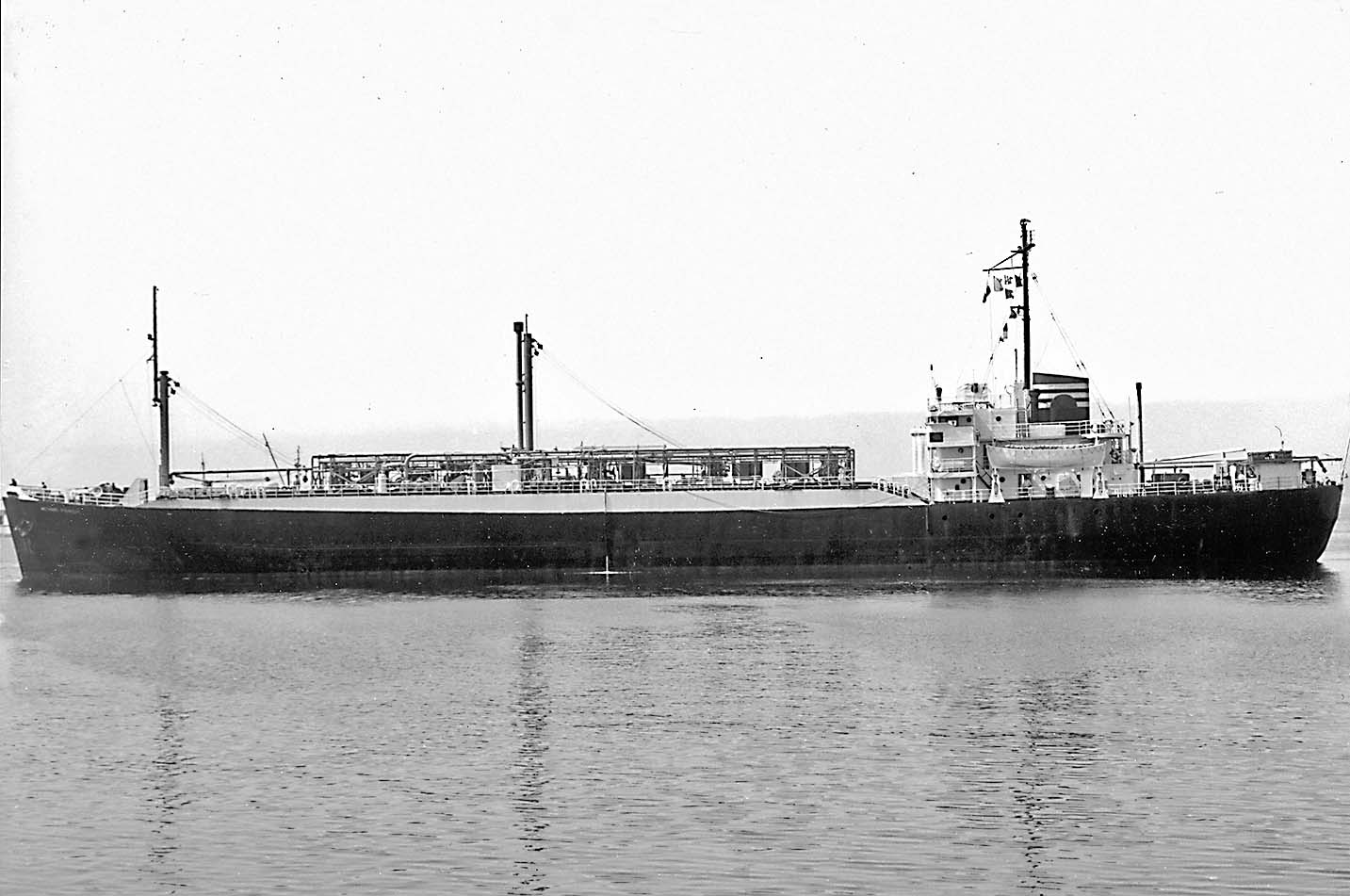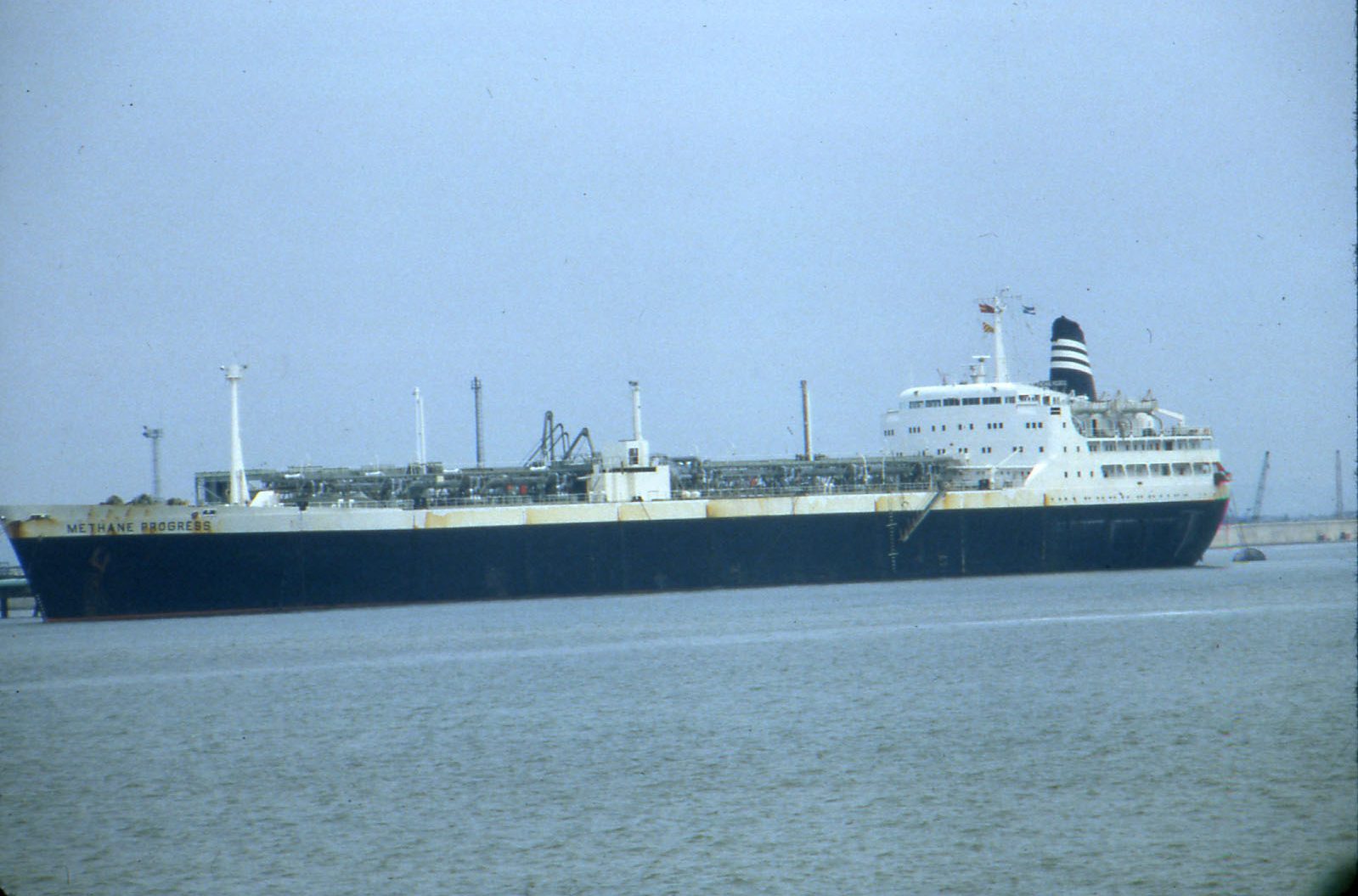Scar house farm was purchased by the Gas Light and Coke Company, later North Thames Gas, in the early 1930s to build a coal gas plant. The land remained dormant until 1954 when the North Thames Gas Chief Engineer named Clarke was asked to look at the storage of natural gas. Natural gas when turned into a liquid could be condensed to 1/600 th of its volume as gas, making it easier to transport over large distances. It was decided that a trial plant would be built at North Thames owned property on Canvey Island. The plans were made to construct 2 x 1,000 tonne tanks an import pipeline and pumps to deliver the LNG to a vaporiser that would convert the liquid to gas for use in the manufacture of towns gas.
In 1956 the project started and in 1958 the first shipment of Liquefied Natural Gas LNG was imported into Canvey Island using a converted cargo ship renamed the Methane Pioneer. The experiment was so successful that The Gas Council later to become British Gas commissioned a survey to look for a site throughout the UK to build an LNG reception terminal that could store a larger amount of LNG than that being stored at Canvey. They looked at Avonmouth and other port areas, but came back to Canvey due to its natural deep water and proximity to the sea and London.
In 1961 the plans were made to build the Terminal and construction started in 1962 to build 6 x 4,000 tonnes LNG tanks to supplement the 2 1,000 tonnes existing tanks the total storage capacity of the Terminal now being 26,000 tonnes. plus three LPG tanks 1 with a capacity of 10,000 tonnes and two with a capacity of 5,000 tonnes each of refrigerated LPG. This would be the first Liquefied Natural Gas Storage Terminal to be built in the world.
In 1964 the first import of LNG reached Canvey by sea, on the ship Methane Princess one of two ships, the other being The Methane Progress built purposely for the trip from Arzew in Algeria to Canvey carrying 12,000 tonnes of LNG. Imports of LNG were scheduled every six days.
In 1969 four in-ground storage tanks were built 130 feet into the ground, these tanks held 21,000 tonnes of LNG each this increased the storage capacity of the Terminal to 110,000 tonnes of LNG. Added to this was the capacity for 20,000 tonnes of refrigerated LPG. The Terminal was capable of storing 130,000 tonnes of potentially flammable product.
In the 1970s the in-ground tanks were removed. In 1994 after British Gas had been privatised, the accountants running LNG storage decided that there was no need to import LNG by sea we could get all the natural gas we required by pipeline from the north sea and Europe, so Canvey was decommissioned ready for sale. In 1997 the Terminal was purchased by Atlas Gas and the tanks converted to store refrigerated propane liquid RPL, after completion of the conversion in February 1998 the Terminal was sold to Calor Gas. Calor spent, a considerable amount of money, bringing the Terminal up to current storage standards, installed new compressors, and commissioned a pipeline from Canvey to Coryton filling plant.

In the control room at the natural gas terminal, the flow of gas is regulated along the pipeline to reception points throughout England.
The terminal can now store 35,000 tonnes of RPL. Importing by ship and exporting by pipeline, ship or road tanker. Plans had been submitted to the local Council for the building of new LNG tanks and a new LPG tank on the Terminal. This would mean the existing tanks would be removed and new state of the art tanks would be built 1 x 12,000 tonne LPG tank and 2 x LNG tanks.
There was some local opposition against the plans possibly 10% this includes People Against Methane (PAM) supposedly a non political organisation and the local politicians, MP Bob Spink, Canvey Councillors, members of Castle Point Council Administration, the Council is Conservative controlled, but the majority of the Canvey Councillors are in the Canvey Independent Party which is led by Dave Blackwell.








Comments about this page
Dear Bill,
Thank you for your contribution to our understanding of this method of LNG storage.
Do you have any more close-up photographs of the capping applied to the double walled tubes that were used to initially freeze the soil? (any photographs would be welcome).
Kind regards,
Graeme
Add a comment about this page